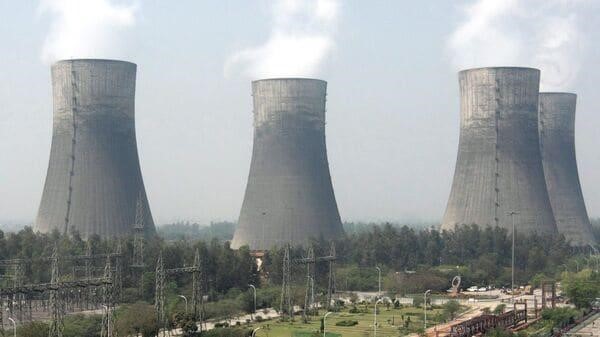Comprehensive Legal Reforms to Boost Nuclear Energy
Comprehensive Legal Reforms to Boost Nuclear Energy
Why in the News?
India is planning to amend its Civil Liability for Nuclear Damage Act and the Atomic Energy Act to attract private sector participation and foreign investment, promote Small Modular Reactors (SMRs), and enhance energy security as part of its clean energy transition strategy. These reforms aim to boost nuclear energy in India and increase the country’s nuclear power generation capacity. The proposed changes are part of broader energy laws in India that seek to revolutionize the nuclear sector, with the Department of Atomic Energy, India playing a crucial role in implementing these reforms.
Need for Reform in Nuclear Legal Framework:
- Nuclear power plants in India currently contribute just 3% of total electricity, despite a target of 100,000 MWe by 2047, highlighting the need to increase nuclear power capacity. This gap underscores the importance of swift atomic energy development to meet growing demand.
- The Civil Liability for Nuclear Damage Act, 2010 (CLNDA), a key nuclear liability law, intended to protect victims of potential nuclear damage, has discouraged supplier participation due to liability concerns. This has led to calls for reform, with some NSG quotes emphasizing the need for alignment with international standards.
- Current FAQs and rules on nuclear liability are not legally binding, deterring foreign and domestic suppliers in the nuclear energy sector.
- A comprehensive amendment is required to address Sections 5, 9, 17(b), and 46 of CLNDA, aligning with Convention on Supplementary Compensation for Nuclear Damage (CSC) norms and ensuring clear limits on liability. This includes addressing the right of recourse and establishing a liability cap, which are crucial aspects of nuclear liability laws.
Unlocking Investment and Technology Potential
- Legal and regulatory reforms can attract private and foreign capital, facilitating SMR development with faster construction, lower costs, and shorter payback periods. The introduction of a modular regulator system could streamline the approval process for these innovative reactors.
- Reforms will enable private companies to invest, own, and operate nuclear power plants in India under strict licensing and security regulations, potentially removing nuclear energy from industries reserved for public sector.
- Proposed changes to Atomic Energy Act Sections 3, 14, 20, and 22 aim to allow universal licensing, private ownership, IP rights, and tariff regulation by Electricity Commissions.
- India can become a global leader in SMRs with startup innovation and FDI liberalisation through FEMA amendments. This could include the development of indigenously developed SMRs at atomic centres in India, showcasing the country’s technological prowess through atomic energy images and demonstrations.
Vision for Future Energy Security and Equity
- Emphasis on public-private partnerships to ensure safety, security, and innovation in the nuclear energy sector. The concept of star health atom could be introduced to highlight the focus on safety measures in nuclear facilities.
- The Department of Atomic Energy, India and the Nuclear Power Corporation of India Limited (NPCIL) will continue to play crucial roles in the sector’s development, overseeing various uses of nuclear energy in India.
- Government to retain full control over the nuclear fuel cycle, while enabling private power generation.
- Reforms align with India’s energy sovereignty, clean transition goals, and Viksit Bharat vision.
- Strengthening the Atomic Energy Regulatory Board (AERB) and ensuring a skilled workforce through initiatives like an atomic academy are essential for sustainable nuclear expansion.
- The proposed reforms are part of a broader Nuclear Energy Mission aimed at enhancing India’s nuclear energy capabilities and meeting its energy transition goals.
These comprehensive reforms in nuclear energy laws and regulations are expected to significantly boost India as a nuclear power, addressing challenges in supplier liability, promoting innovation through nuclear energy research, and establishing a robust nuclear insurance pool. The reforms also aim to clarify nuclear accident compensation procedures, enhancing public confidence in the sector.
By encouraging private sector participation and streamlining regulations, India aims to accelerate its nuclear power program, ensuring energy security and supporting its clean energy transition. These changes, coupled with broader electricity distribution reforms, are set to transform India’s energy landscape, positioning nuclear power as a key component of the country’s sustainable energy future.




